Goal is to improve survival during prolonged hot summers
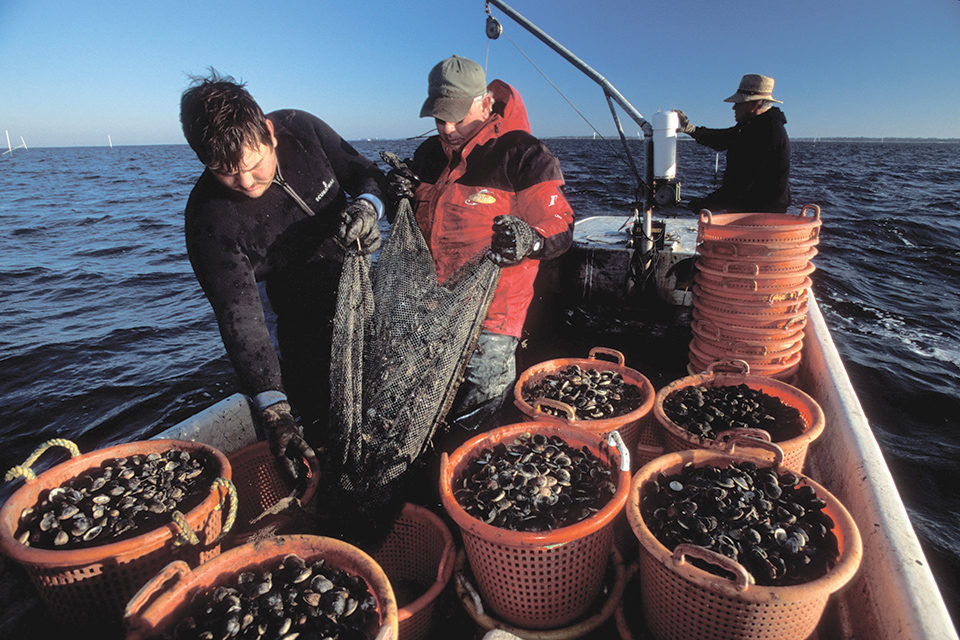
Florida-cultured clams are recognized in markets and restaurants across the United States. This did not happen by chance overnight. Through public and private research, as well as federally funded job retraining programs in shellfish aquaculture conducted for underemployed fishermen in the 1990s, this industry has grown into a business worth over U.S. $10 million annually.
The Shellfish Aquaculture Extension Program (SAEP) and Florida Sea Grant work with research faculty at the University of Florida Institute of Food and Agricultural Sciences (UFIFAS) and other institutions such as Harbor Branch Oceanographic Institution in developing and implementing applied research and educational extension projects for the shellfish aquaculture industry in Florida.
In collaboration with industry, institutional, and agency stakeholders, these projects are focused on four major areas: animal health, genetic stock improvement, water quality monitoring, and production technologies. These research and extension efforts, along with the multitude of educational materials and programs developed, have assisted the Florida industry in growing from a fledgling industry less than 20 years ago to a leading producer of cultured hard clams in the United States.
Animal health
In 2003, SAEP and University of Florida Department of Fisheries and Aquatic Sciences (UFDFAS) faculty conducted a preliminary health assessment of cultured clams by examining clams collected during the summer and winter months from several growing areas in Florida. No serious disease-causing agents associated with the clams were detected. However, there is a growing concern regarding the health of stocks, as growers report crop losses during the summer months.
Pathology can be exacerbated by stressors such as high temperatures, low dissolved-oxygen levels, or high stocking densities. With U.S. Department of Agriculture (USDA) funding, a more thorough examination of stocks prior, during, and after the problematic summer months by Dr. Denise Petty, UFDFAS aquatic veterinarian, will help determine if environmental diseases or disease pathogens are present.
Genetic stock improvement
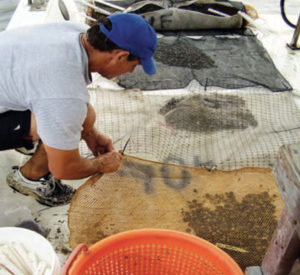
Using federal and state funds, SAEP and UFIFAS faculty are actively pursuing applied research in developing a hardier clam strain through basic breeding techniques to improve survival during the prolonged hot summers in Florida. During this time, clams encounter high water temperatures and reduced oxygen and phytoplankton levels. At the same time, clam metabolism is higher. Together these stresses may contribute to increasingly high summer mortalities.
Funded by UDSA and Florida Sea Grant, a project evaluating the use of triploidy to increase summer survival and clam production is reaching completion this year. This fall, results from field trials conducted with industry partners will determine if triploids have higher survival.
Laboratory challenges conducted by Dr. Shirley Baker and her graduate students in the UFDFAS indicate that triploid clams may exhibit 15 percent higher survival over diploids in hypoxic waters of normal salinity. Faculty in the University of Florida Food and Resource Economics Department (FRED) are assessing the economic costs and benefits of utilizing triploid hard clams in the culture process.
The use of hybrids between the hard clam Mercenaria mercenaria and southern quahog clam, M. campechiensis, for increasing survival and production is being examined with USDA special research grant funding procured through the efforts of the Cedar Key Aquaculture Association. Pure lines of each species and their hybrids produced this fall at Harbor Branch Oceanographic Institution will be evaluated under commercial conditions during 2008 and 2009.
Water quality monitoring
A partnership developed by the SAEP with federal and state agriculture agencies has allowed the operation and maintenance of water quality and weather-monitoring stations that serve as a decision support tool for the clam industry. Currently, stations located at seven high-density lease areas in five coastal counties provide continuous online information to clam growers at www.floridaaquaculture.com (“Live Water Monitoring”), allowing them to make informed management decisions based on temperature and salinity measurements. The database, however, does not allow for an in-depth understanding of the influence of temperature on clam production.
Inexpensive data loggers recently purchased with USDA funding will allow spatial resolution and broad coverage. This summer, clam growers deployed loggers at multiple lease sites so temperature variability can be adequately ascribed due to water depth, substrate characteristics, prevailing currents, and other parameters.
Additionally, a series of extension publications is being written by Baker and her graduate students that explains the roles of environmental parameters such as salinity, temperature, and dissolved oxygen in clam aquaculture. Each publication features strategies that growers can use to manage their crops for a particular environmental factor.
Production technology
Diversifying the hard clam culture industry by developing farming technology and markets for other bivalve species would increase economic stability and growth. The blood ark (Anadara ovalis) and ponderous ark (Noetia ponderous) are native bivalve species found to naturally set and grow in clam bottom bags.
The culture and market potentials of these ark clams were evaluated using USDA Cooperative State Research, Education, and Extension Service funding in an effort to provide a different revenue source for small-scale hard clam culture enterprises. Although both arks can be spawned and reared using techniques similar to those for hard clams, they are not familiar to most American consumers.
Florida Sea Grant is funding another project to develop and demonstrate biological and technical procedures for spawning and culturing the sunray venus clam (Macrocallista nimbosa). The sunray venus is an attractive venerid clam distributed from South Carolina to Florida and the U.S. states on the Gulf of Mexico.
Commercial fishermen targeted the large 10.2- to 17.8-cm clams in the late 1960s off the northwest Florida coast for the processed meat market, but the erratic size of the fishing grounds precluded large-scale exploitation of this fishery. However, growth experiments using marked individuals suggested that these popular clams attain a length of 7.6 cm within 12 months.
The prior fishery, market, and potential growth rate of the sunray venus, along with its native species status, make it a logical choice as a new species to diversify the industry. To date, sunray venus broodstock have been collected and spawned, with larvae responding to hard clam culture methods. Juveniles produced from two spawns are being cultured by industry partners on commercial leases.
Complementing these efforts will be a market assessment study by UFFRED faculty to determine the market acceptance of sunray venus clams in traditional and sushirestaurants in the region. If successful, a market diversification strategy will be available for hard clam growers who culture alternative molluscan shellfish species.
Practical educational tools
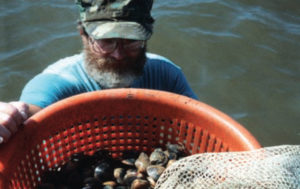
In addition to these projects, there are new educational tools geared for industry application. A Web-based pictorial guide that highlights the diversity of marine organisms found in, on, and around clam culture bags was recently released at http://shellfish.ifas.ufl.edu.
“What’s in the Clam Bag?” features over 150 organisms with images provided by Jon Fajans, a former DFAS researcher. The guide allows clam farmers to identify organisms by selecting from easily recognizable categories. For each organism, taxonomy and a description are provided. Each organism is further defined as a friend, foe, or neighbor to clam farming with a description of the effects on clam farming and information on what clam farmers can do about the organisms.
Along with these newer resources, a host of other products and publications available through Florida Sea Grant (www.flseagrant.org) have been developed to address topics of interest for the hard clam culture industry. Such topics include the Computer Logbook and Management (CLAM) record-keeping system, which allows participants in the hard clam crop insurance program to better demonstrate inventory losses; the technical and economic feasibility of remote setting hard clam seed; strategies for more-effective industry organization; costs and earnings for hard clam culture; and the regional economic impacts of the hard clam culture industry.
(Editor’s Note: This article was originally published in the November/December 2007 print edition of the Global Aquaculture Advocate.)
Now that you've reached the end of the article ...
… please consider supporting GSA’s mission to advance responsible seafood practices through education, advocacy and third-party assurances. The Advocate aims to document the evolution of responsible seafood practices and share the expansive knowledge of our vast network of contributors.
By becoming a Global Seafood Alliance member, you’re ensuring that all of the pre-competitive work we do through member benefits, resources and events can continue. Individual membership costs just $50 a year.
Not a GSA member? Join us.
Authors
-
Leslie Sturmer
University of Florida Institute of Food and Agricultural Sciences
Shellfish Aquaculture Extension Program
P.O. Box 89
Cedar Key, Florida 32625 USA[117,100,101,46,108,102,117,64,116,115,110,108]
-
Chuck Adams, Ph.D.
University of Florida
Food and Resource Economics Department/Florida Sea Grant
Gainesville, Florida, USA -
John Scarpa, Ph.D.
Harbor Branch Oceanographic Institution, Inc.
Aquaculture Division
Fort Pierce, Florida, USA
Tagged With
Related Posts
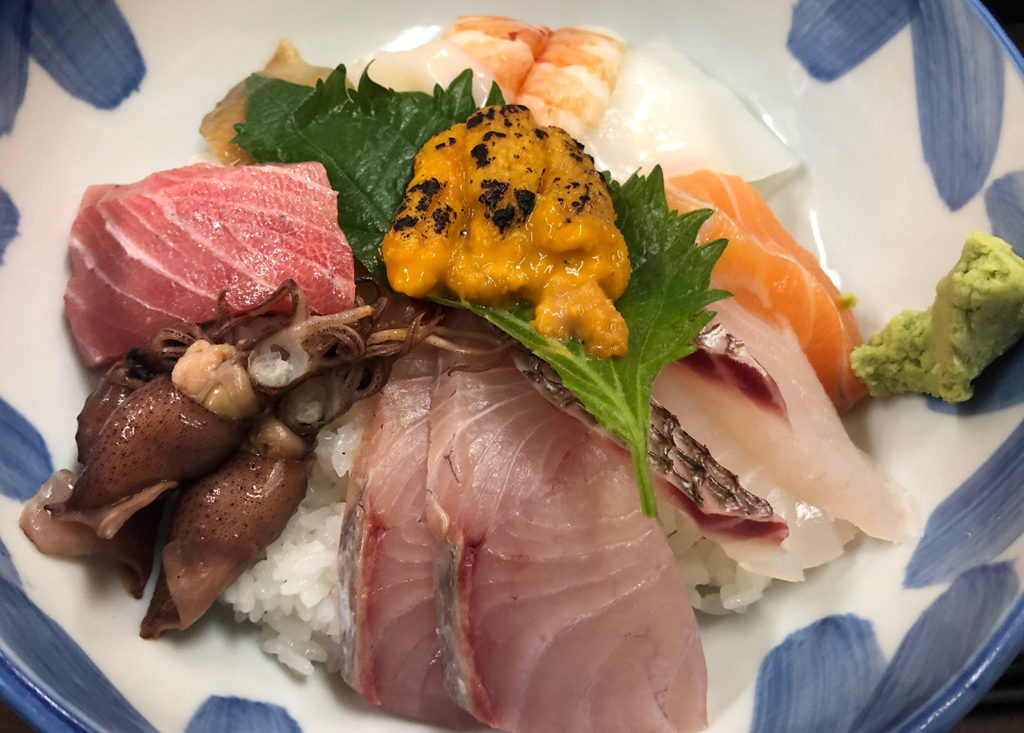
Intelligence
Analysis of global diets highlights persistent undernutrition
Climate change, shifting incomes and evolving diets complicate the search for solutions to obesity and undernutrition in vulnerable populations.

Aquafeeds
Analyzing the hydrostability of shrimp feeds
The physical integrity and nutrient leaching of shrimp aquafeeds are important aspects in their quality control. The water stability of shrimp aquafeeds is often evaluated in various subjective manners. This analytical procedure provides a baseline for the aquafeed manufacturer to assess product quality.
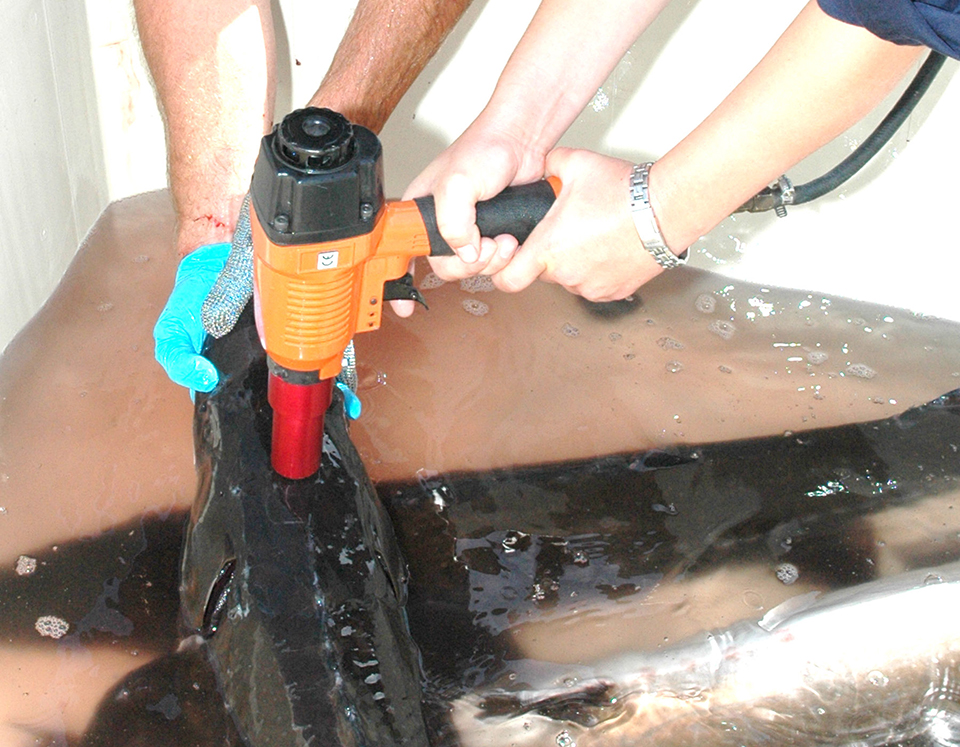
Health & Welfare
Animal welfare: Growing factor in international aquaculture
Although concerns for the animal welfare of food animals are currently highest in the United Kingdom and European Union, they are also growing in other parts of the world.
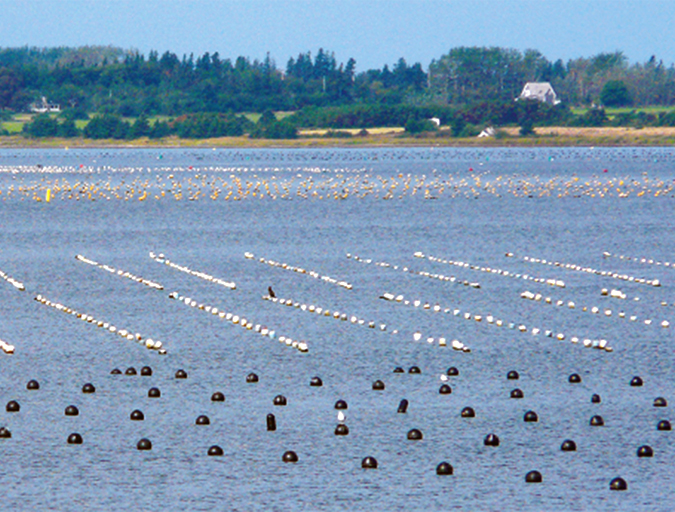
Innovation & Investment
Aquaculture in Canada: status, perspectives
Canada exports farmed seafood products to more than 22 countries and is the main seafood supplier to the U.S. market. Finfish, primarily salmon, production is strong and shellfish production is growing, but diversification will be imperative to maintain competitiveness.


